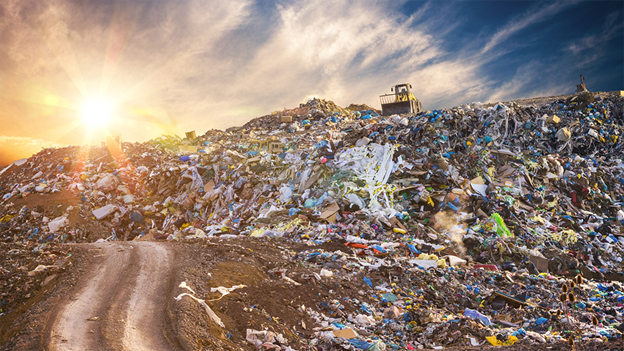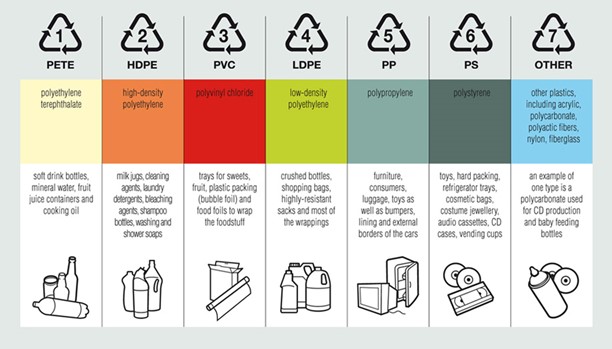“Reduce, Reuse, Recycle,” is the mantra preached to adults and children alike in an attempt to reduce the amount of trash ending up in our ocean. However, when recycling fails, as it often does, what is there to do?
For anything to be recycled, it must adhere to strict guidelines that vary by city or state. Generally, glass, aluminum, cardboard, and plastic products can be recycled when they are clean and dry, meaning free of food residue, grease, and any water droplets. However, when it comes to plastic, things get much trickier. In fact, according to Waste Management’s recycling guide, the Mobius or “chasing arrows” symbol does not actually mean the item is recyclable. They suggest only recycling plastic jars, jugs, bottles, and tubs. The final decision on which plastics can and can’t be recycled is ultimately up to cities and is dependent on which market the recyclables are sent to.
The inconsistency in determining which materials can be recycled and the cleaning process required to ensure recycling occurs can be discouraging for many residents, especially when in social or outdoor settings. The lack of public knowledge about recycling protocol can often lead to contamination despite a person’s good intentions. Due to these factors, the percentage of plastic that gets fully recycled is estimated to only be about 5%, with the rest of it being burned or sent to landfills.
Unfortunately, the rate of plastic recycling is devastatingly low, especially considering the rate that plastic is produced and sold in countries like the United States. It is estimated that by 2050, 1.1 billion tons of plastic will be produced annually, and with recycling as the only solution for the waste, most of that plastic will end up in landfills for the foreseeable future. Landfills, however, are not sustainable and with a growing population and rapidly expanding production of plastic, we are beginning to run out of room for all our trash. Consequently, trash that is discarded on the street, or even in landfills, often makes its way to the ocean through the local watershed.
Of the Five Rs (refuse, reuse, reduce, recycle, rot), recycling has been marketed as the most effective solution to the plastic problem. By putting the emphasis on recycling when it is not done efficiently, people tend to forget the most important Rs- refuse and reduce. By refusing to accept unnecessary plastic from businesses, consumers can indicate to that business that the use of plastic is unfavorable to their customers, possibly even causing them to reevaluate their production.
What can you do?
The most impactful way to reduce plastic pollution in our oceans is to reduce our usage of it. It is virtually impossible to absolutely cease purchasing plastic, as our toiletries, groceries and cleaning products are all packaged in plastic. However, awareness of the damage caused by pollution can encourage consumers to make an effort to refuse plastics. By carrying a reusable water bottle instead of purchasing single-use bottles of water, an individual could avoid using an average of 156 plastic bottles every year. Opting for reusable shopping and produce bags is also a very effective way to reduce plastic usage, as it is estimated that in the US alone, 14 billion shopping bags are used each year. For our coffee fanatics, Starbucks and Dunkin’ Donuts offer their customers the option to get their beverage in their own reusable cup, if it is clean and does not have another company’s branding on it. Starbucks offers a $0.10 discount to customers who choose to do so to encourage the use of reusable cups.
Refill and bulk food markets are a sustainable alternative to buying household items, toiletries, and food without the plastic waste. Bulk markets such as Verde, which has three locations in South Florida, allow customers to bring their own clean containers, tare them, and refill them with their products. They offer an abundance of detergents, cleaning supplies, personal care items, beauty products and food in bulk, allowing customers to avoid the plastic packaging these items are often purchased in. Other chains that offer food refills include Sprouts Farmers Market, The Fresh Market and Whole Foods. Although these stores are great alternatives to plastic use, they may sell at a higher price and are not as common or accessible as other grocery stores.
The plastic problem is one of the biggest threats our ocean is facing, with estimates that by weight, there will be more plastic than fish in the ocean by 2050. While we can make lifestyle changes to reduce the amount of plastic we purchase and then throw out, it may be time for us to search for a more environmentally friendly alternative to plastic.
Individual carbon footprint is the direct or indirect impact of your activities. SeaKeepers’ mission is to first take the lead and encourage personal action to reduce your footprint, raise awareness on ocean sustainability and conservation. Join our DISCOVERY Fleet if you have a vessel and want to support oceanographic research or become a volunteer and join SeaKeepers at our next beach cleanup.
Sources:
An Analysis of the Impact of Single-Use Plastic Bags. New York State Department of
Environmental Conservation. (2018, January 13).
https://www.dec.ny.gov/docs/materials_minerals_pdf/dplasticbagreport2017.pdf
Bags by the Numbers. Waste Management Pacific Northwest. (n.d.).
https://www.wmnorthwest.com/guidelines/plasticvspaper.htm
Fact sheet: Plastics in the Ocean. Earth Day. (2023a, July 5).
https://www.earthday.org/fact-sheet-plastics-in-the-ocean/#:~:text=One%20patch%20in%20particular%2C%20known,are%20fish%20(by%20weight)
Fact sheet: Single use plastics. Earth Day. (2023, July 5).
https://www.earthday.org/fact-sheet-single-use-plastics/
Hoodenpyle, E. (2019, December 12). The lifespan of a plastic bag. Medium.
https://medium.com/@hoode764/the-lifespan-of-a-plastic-bag-1f12194d51ec
Linda. (2022, December 5). Dunkin’ donuts will serve coffee in any cup that you bring. the
commons.
https://thecoconutmama.com/can-you-bring-your-own-cup-to-dunkin-donuts/
Miller Publishing Company. (2021, January 24). What they really do: Miami-Dade Dept. of Solid
Waste Management. Miami’s Community News | Your local connection.
https://communitynewspapers.com/kendallgazette/what-they-really-do-miami-dade-dept-of-solid-waste-management/
Plastic break down and fragmentation. Plastic Soup Foundation. (2020, May 1).
https://www.plasticsoupfoundation.org/en/plastic-problem/plastic-environment/break-down/
The Real Truth About the U.S. Plastics Recycling Rate. The Last Beach Cleanup. (2022, May).
https://www.lastbeachcleanup.org/_files/ugd/dba7d7_9450ed6b848d4db098de1090df1f9e99.pdf
Reusable Water Bottle Market Size & Share Report, 2030. Grand View Research. (n.d.).
https://www.grandviewresearch.com/industry-analysis/reusable-water-bottle-market
Starbucks Corporation. (2021, June 8). Starbucks brings back personal reusable cups to Starbucks cafes in the U.S.Starbucks Stories & News.
https://stories.starbucks.com/stories/2021/starbucks-brings-back-personal-reusable-cups-to-starbucks-cafes-in-the-us/
Sullivan, L. (2022, October 24). Recycling plastic is practically impossible - and the problem isgetting worse. NPR.
https://www.npr.org/2022/10/24/1131131088/recycling-plastic-is-practically-impossible-and-the-problem-is
What is Recycling & What to Recycle. WM. (n.d.).
https://www.wm.com/us/en/recycle-right/recycling-101
Image sources:
All about landfills: Uses, types, and more. HWH Environmental. (2022, April 14).
https://www.hwhenvironmental.com/landfills-101/
Plastic coding system guide for resin types. Polychem USA. (2017, August 2).
https://polychem-usa.com/plastic-coding-system/
Stoye, E. (2019, September 18). Humans consuming thousands of microplastic particles in their food every year. Chemistry World.
https://www.chemistryworld.com/news/humans-consuming-thousands-of-microplastic-particles-in-their-food-every-year/3010600.article




